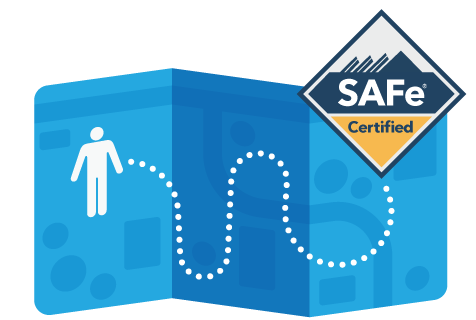GET ➡️ Leading SAFe® Agilist Certification Exam Dumps
Exam Details: SP – SAFe Practitioner 5.1

1dollarcart Membership / Subscription – Get all latest & premium digital products accesS
safe 5 practitioner exam (5.0) dumps SAFe Agile Certification Questions practice exam is the best tool SAFe® 5 Agilist (SA) exam to assess your Leading SAFe 5.0 Agilist – Free Practice Test. The practice of Leading SAFe questions Sample Decks: SAFe 5 Acronyms, SAFe 5 Glossary, SAFe 5 Study Guide. Show Class PRACTICE TEST: SAFe 6 Practitioner Certification Study Guide is included . Clear SAFe® 5 practitioner in first attempt with the most reliable exam dumps material from #1dollarcart. We guarantee to offer best price in the online market along with the updated dumps and customer services.
Example Question Set
| 1 | What is a major benefit of reducing batch size? | Increases throughput |
| 2 | A team finishes developing all of their Stories in the first six days of the Iteration, tests them in the following two days, and fixes bugs in the days remaining. How is the team behaving? | They are waterfalling the Iteration |
| 3 | Which situation should use the Large Solution SAFe configuration | Organizations that need to scale Agile across the enterprise. |
| 4 | What should be taken into account when estimating Story point size? | Complexity |
| 5 | The Release Train Engineer is a servant leader who displays which two actions or behaviors? | leads by example ,Listens and supports teams in problem identification and decision making |
| 6 | What is one recommended way of splitting Features into Stories during a PI Planning event? | Implement the simplest variant of the functionality first and then implement the rest as an enhancement |
| 7 | which statement describes a cross-functional team? | each team member can define ,build and test a component or feature |
| 8 | what is the goal of the PI planning event ? | To create a plan for the upcoming PI showing how stories map to iteration |
| 9 | What information does a Cumulative Flow Diagram provide? | Data for the team to identify Current bottlenecks |
| 10 | What is Scrum? | A lightweight process for cross-functional, self-organized teams |
How many questions are in the safe exam?
Exam format – Multiple Choice, Multiple Select
Exam delivery – Web-based (single-browser), closed book, no outside assistance, timed
Exam access – Candidates can access the exam within the SAFe Community Platform upon completion of the SAFe® for Teams course
Exam duration – Once the exam begins, candidates have 90 minutes (1.5 hours) to complete the exam
Number of questions – 45
Passing score – 35 out of 45 (77%)
Language – English
Exam Sections Percent of Items on Exam
SECTION 1: Introducing SAFe – 20%
SECTION 2: Building an Agile Team – 18%
SECTION 3: Planning the Iteration – 18%
SECTION 4: Executing the Iteration – 24%
SECTION 5: Executing the PI – 20%
Types of SAFe Agile Certification :-
1) SAFe Agile Certification for Agile Product Manager:
2) SAFe Agile Certification for Architect:
3) SAFe Agile Certification as Agile Software Engineer:
4) SAFe Agile Certification for DevOps Practitioner:
5) SAFe Agile Certification for Program Consultant:
6) SAFe Agile Certification for Release Train Engineer:
7) SAFe Agile Certification for Product Owner or Product Manager:
8) SAFe Agile Certification as Scrum Master:
9) SAFe Agile Certification for Practitioner:
10) SAFe Agile Certification for Agilist:
Which SAFE certification is best?
SAFe Agilist
SAFe Scrum Master Certification
SAFe Advanced Scrum Master
SAFe POPM Certification & many more.
For SAFe agilist certification exam dumps 2023
Worldwide $ :- safe-agilist-certification-exam-dumps-worldwide
Indian ₹ :- safe-agilist-certification-exam-dumps-india
For SAFe practitioner exam certification dumps
Worldwide $ :- safe-practitioner-certification-dumps-worldwide
Indian ₹ :- safe-practitioner-certification-dumps-india
Fair Use Act Disclaimer :
This site is for educational purposes only.
Fair Use
Copyright Disclaimer under section 107 of the Copyright Act of 1976, allowance is made for “fair use” for purposes such as criticism, comment, news reporting, teaching, scholarship, education and research.
Fair use is a use permitted by copyright statute that might otherwise be infringing.
Fair Use Definition
Fair use is a doctrine in United States copyright law that allows limited use of copyrighted material without requiring permission from the rights holders, such as commentary, criticism, news reporting, research, teaching or scholarship. It provides for the legal, non-licensed citation or incorporation of copyrighted material in another author’s work under a four-factor balancing test.

